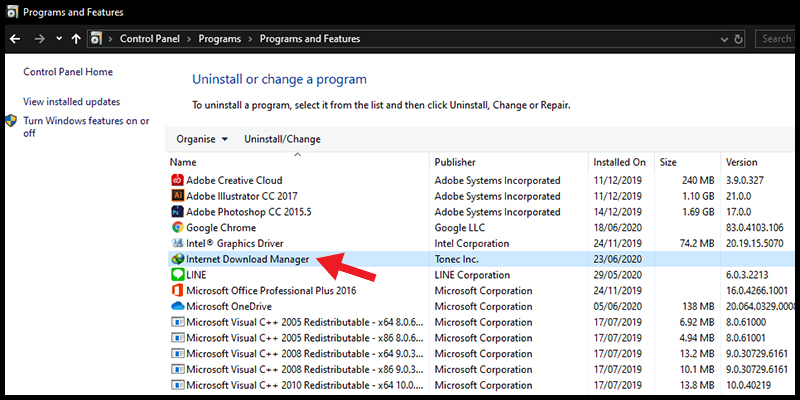What is USB 3.0 and USB 2.0?
2.0.0.56 Seem to have fixed 'no receive chars in terminal' problem' when start up port does not exist. 2.0.0.55 Now uses FirstAvailablePort (not com1) to open. This is for laptops without COM1 Consequence is that I now do search com1-4 for 1st port if scanports=0 Hopefully will help with the terminal doesn't work problem. Leawo DVD Ripper 8.3.0.2 MAC Leawo DVD Ripper 8.3.0.2 WIN ASCOMP Cleaning Suite Pro 4.0.0 Pixarra Pixel Studio 2.17 FloorPlan 3D Microsoft Hyperlapse Pro 1.6 ByteScout Watermarking Pro Personal 3.2.1.680 TeraCopy Pro 3.26 IObit Advanced SystemCare 13.7 Pro Advanced SystemCare 13.7 Pro PDF Link Editor Pro 2.4.2 Tunelf Spotify Music Converter 1.1. The Arduino Reference text is licensed under a Creative Commons Attribution-Share Alike 3.0 License. Find anything that can be improved? Suggest corrections and new documentation via GitHub. Download Serial Watcher - Lightweight, portable, simple, straightforward, very effective and useful serial input terminal for advanced computer users, using low resources. Serial Watcher 2.0.3. Syberia 1 0 2.
Developed in the 1990s, the Universal Serial Bus (USB) standard was developed to define communication protocols, including cables and connectors, between computers and electronic devices such as printers and scanners. As the number of devices multiplied in quantity and types, the USB port was adopted as the basic connection portal.
Devices like smartphones, PDAs, tablets, smartphones and video game consoles can connect to computers with USB ports allowing recharging and communication thereby replacing the requirement of adapters and power chargers. Imyfone umate pro 5 crack.
USB3.0 was released in November 2008, almost eight years after the release of USB 2.0. Over five years later, in 2014, USB 3.1 was released with widespread use expected in 2015.
What is USB 3.1?
Photo eraser inpaint 1 64gb. The newest standard is for USBs is USB 3.1. It offers three major improvements over 3.0: an 'always right' C-type connector that plugs in without regard to orientation, higher data transfer speeds of up to 10 Gbps (gigabits per second), and the capacity to power any type of device.
The C-type connector is small enough for modern, slim devices, such as MacBook Air-type notebooks, tablets, and smartphones. but still robust enough for 10,000 cycles of use. Data transfer speeds are more in sync with current app and user needs, especially for video and image files. And the option to connect to and power any type of device, with 100 watts of charging power that can be divided between two devices, greatly reduces 'charger and cable clutter,' simplifying connectivity between personal devices. However, backwards compatibility will be limited.

USB 3.0 Highlights and Benefits over USB 2.0
- Transfer rates: USB 2.0 offers transfer rates of 480 Mbps, and USB 3.0 offers transfer rates of 4.8 Gbps — 10 times faster.

USB 3.0 Highlights and Benefits over USB 2.0
- Transfer rates: USB 2.0 offers transfer rates of 480 Mbps, and USB 3.0 offers transfer rates of 4.8 Gbps — 10 times faster.
- Addition of another physical bus: The amount of wires was doubled, from 4 to 8. Additional wires required more space in both the cables and connectors, so new types of connectors were designed.
- Power consumption: USB 2.0 provides up to 500 mA whereas USB 3.0 provides up to 900 mA. The USB 3 devices provide more power when needed and conserve power when the device is connected but idling.
Series 2003 1$ Bill
- More bandwidth: Instead of one-way communication, USB 3.0 uses two unidirectional data paths, one to receive data and the other to transmit while USB 2.0 can only handle only one direction of data at any time.
- Improved bus utilization: A new feature was added (using packets NRDY and ERDY) to let a device asynchronously notify the host of its readiness.
When data is being transferred through USB 3.0 devices, cables, and connectors, the transaction is initiated by the host making a request followed by a response from the device. The device either accepts the request or rejects it. If accepted, the device sends data or accepts data from the host. If there is lack of buffer space or data, it responds with a Not Ready (NRDY) signal to tell the host that it is not able to process the request. When the device is ready then, it will send an Endpoint Ready (ERDY) to the host which will then reschedule the transaction.
Series 2003 $20 Bill
Physical Differences
USB 3.0 Connectors are different from USB 2.0 Connectors and the 3.0 connectors are usually colored blue on the inside in order to distinguish them from the 2.0 connectors.
Backward Compatible
USB 3.0 is compatible with USB 2.0. However, the USB 3.0 product will perform at the same level as a USB 2.0 product, so speed and power benefits will not be fully realized.
USB 3.0 receptacles are electrically compatible with USB Standard 2.0 device plugs if they physically match. USB 3.0 type-A plugs and receptacles are completely backward compatible, and USB 3.0 type-B receptacles will accept USB 2.0 and earlier plugs. However, USB 3.0 type-B plugs will not fit into USB 2.0 and earlier receptacles.
This means that USB 3.0 cables cannot be used with USB 2.0 and USB 1.1 peripherals, although USB 2.0 cables can be used with USB 3.0 devices, if at USB 2.0 speeds.
The following videos review the speed of USB 2.0 vs USB 3.0 products:
Price
For a similar product, the USB 3.0 version is generally more expensive than its USB 2.0 version.
You can check the current prices on Amazon for a few USB 2.0 vs USB 3.0 enabled devices:
